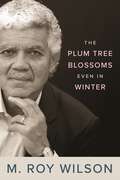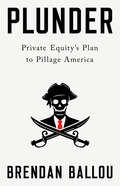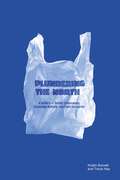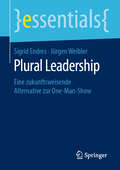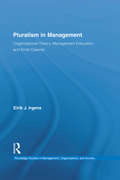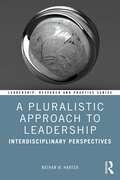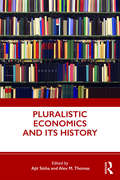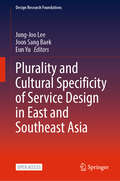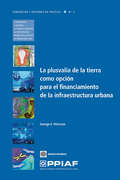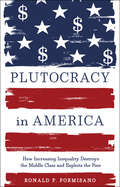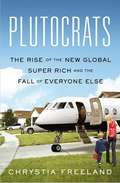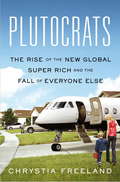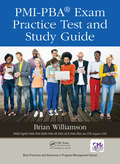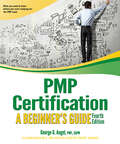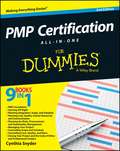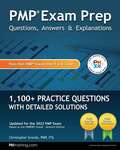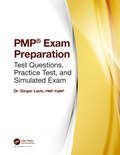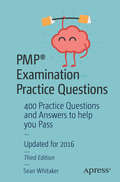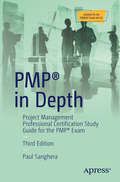- Table View
- List View
Pluggin In the Consumer: The Adoption of Electrically Powered Vehicles in the U.S.
by Polly Ross Ribatt Elie OfekHow will U.S. consumers respond to the proliferation of alternative-fuel vehicles, such as cars powered partially or completely by electricity, in the coming decade? After a century in which fossil-fuel-powered vehicles dominated the market, it appeared consumers would have an unprecedented level of choice as to the type of car they purchased and drove. Automakers were introducing various models that used electricity for power, and other power sources, such as fuel cells, were also seeing increased attention. Some observers believed the time was ripe for widespread adoption of these new vehicles: consumers and policymakers were increasingly concerned about the fallout of U.S. dependence on fossil-fuel-powered cars-namely, adverse environmental impacts and reliance on foreign sources of oil, plus the fluctuating price of gasoline-and innovative infrastructure technology was being developed to support electric-powered cars. Despite these promising developments, it remained unclear whether consumers were ready to switch to alternative-fuel vehicles on a large scale. Would they be willing to make the lifestyle trade-offs required for grid-dependent vehicles? How should policymakers intervene, if at all, to encourage adoption, and what marketing activities and incentives might firms employ to stimulate demand?
The Plum Tree Blossoms Even in Winter
by M. Roy WilsonFrom a childhood marked by loneliness and want, M. Roy Wilson forged an extraordinary life of accomplishment and acclaim. His accomplishments include the presidencies of four universities, dean of two medical schools, and deputy director of one of the National Institutes of Health's twenty-seven Centers and Institutes. Through this inspiring and deeply personal story of struggle and success, Wilson shares insights gleaned through his life experiences, many of which helped others reach their highest potential as students, faculty, physicians and people. Born to a Japanese mother and Black father, much of M. Roy Wilson's childhood in Japan was marked by parental absence, sexual abuse, extended periods as a runaway, physical confrontations and frequent moves. He was often forced to play the role of caregiver to his younger sister, and together they grew to depend on each other for support until their teenage years. Under the guidance of his high school English teacher, Wilson turned his life around and obtained an MD from Harvard Medical School. His adult life as a physician was ironically beset with significant health challenges, including diagnoses of cardiomyopathy that rendered him uninsurable, a potentially blinding eye disease, and cancer that at first was thought to be terminal. Having developed a veneer of invulnerability as a child, he kept these medical diagnoses a secret until now. Like the plum tree that blooms even during dark and dreary times, Wilson overcame his childhood challenges and later, his health issues, to achieve distinction in medicine, higher education, and global health research. The journey to this unlikely outcome is an engrossing tale of outside forces that shape racial and cultural identity, the importance of mentorship and friendship, and the lasting impact of an unstable and often heartbreaking family dynamic.
Plunder: Private Equity's Plan to Pillage America
by Brendan BallouThe authoritative exposé of private equity: what it is, how it kills businesses and jobs, how the government helps, and how we stop it Private equity surrounds us. Firms like Blackstone, Carlyle, and KKR are among the largest employers in America and hold assets that rival those of small countries. Yet few understand what these firms are or how they work. In Plunder, Brendan Ballou explains how private equity has reshaped American business by raising prices, reducing quality, cutting jobs, and shifting resources from productive to unproductive parts of the economy. Ballou vividly illustrates how many private equity firms buy up retailers, medical practices, prison services, nursing-home chains, and mobile-home parks, among other businesses, using little of their own money to do it and avoiding debt and liability for their actions. Forced to take on huge debts and pay extractive fees, companies purchased by private equity firms are often left bankrupt, or shells of their former selves, with consequences to communities that long depended on them. Perhaps most startling is Ballou&’s insight into how this is happening with the active support of various arms of the government. But, as Ballou reveals in an agenda for reining in the industry, private equity can be stopped from wreaking further havoc.
Plundering the North: A History of Settler Colonialism, Corporate Welfare, and Food Insecurity
by Kristin Burnett Travis HayThe manufacturing of a chronic food crisis Food insecurity in the North is one of Canada’s most shameful public health and human rights crises. In Plundering the North, Kristin Burnett and Travis Hay examine the disturbing mechanics behind the origins of this crisis: state and corporate intervention in northern Indigenous foodways. Despite claims to the contrary by governments, the Hudson’s Bay Company (HBC), and the contemporary North West Company (NWC), the exorbitant cost of food in the North is neither a naturally occurring phenomenon nor the result of free-market forces. Rather, inflated food prices are the direct result of government policies and corporate monopolies. Using food as a lens to track the institutional presence of the Canadian state in the North, Burnett and Hay chart the social, economic, and political changes that have taken place in northern Ontario since the 1950s. They explore the roles of state food policy and the HBC and NWC in setting up, perpetuating, and profiting from food insecurity while undermining Indigenous food sovereignties and self-determination. Plundering the North provides fresh insight into Canada’s settler colonial project by re-evaluating northern food policy and laying bare the governmental and corporate processes behind the chronic food insecurity experienced by northern Indigenous communities.
Plural Leadership: Eine zukunftsweisende Alternative zur One-Man-Show (essentials)
by Sigrid Endres Jürgen WeiblerTechnologiegetriebene Geschäftsmodelle und veränderte Erwartungen an die Arbeit (New Work) verlangen nach Alternativen zu traditionellen Führungsformen. Dieses essential liefert hierzu innovatives Führungswissen und konzentriert sich dabei auf Plural Leadership. Neben Ausführungen zu Co-Leadership, Führungsdual und Verteilter Führung wird Shared Leadership als besonders elaborierte Form von Plural Leadership vertiefend illustriert. Die Autoren analysieren kompakt und kritisch, was Plural Leadership für die Praxis bringt und wie es sinnvoll umgesetzt werden kann.
Pluralism in Management: Organizational Theory, Management Education, and Ernst Cassirer (Routledge Studies in Management, Organizations and Society)
by Eirik IrgensAnalytic philosophy has come to dominate organizational theory and management education, despite criticism from several notable scholars. The European continental philosophical tradition, on the other hand, is seen by some as a counterpoint to US- and UK-dominated functionalistic organizational theories. These two very different schools of thought are now largely practiced in isolation from one another. Late nineteenth and early twentieth century philosopher Ernst Cassirer served as a mediating force and facilitated a fruitful dialogue between the two schools until he was forced to leave Germany when the Nazi party came to power. In Pluralism in Management, author Eirik J. Irgens utilizes Ernst Cassirer’s pluralistic philosophy in order to investigate how different but connected forms of knowing, including art, myth, religion, science, and history may help us become better organizational scholars and management educators. With a special emphasis on the complementary qualities of art and science, Irgens builds on Cassirer to discuss how art and science represent two different but complementary channels to reality, in contrast with each other but not in conflict or contradiction, and the challenge of developing "two-eyed" managers. Revitalizing Cassirer’s almost forgotten philosophy, the book illustrates the value of philosophical application to organizational study, and the need for bringing together the best of the humanities and the science based management traditions in order to improve management education.
A Pluralistic Approach to Leadership: Interdisciplinary Perspectives (Leadership: Research and Practice)
by Nathan W. HarterThis thought-provoking book adopts a pluralistic framework to examine leadership and raises important questions about how leadership studies scholars see and do their work.This book begins with an interdisciplinary discussion of what a pluralistic mindset is – a distinct framework for acknowledging and managing a diversity of opinions while retaining an abiding faith in the merits of rigorous investigation. Nathan W. Harter argues that pluralism is an important consideration for leadership scholars, and threads this throughout a series of chapters that explore such topics as the proper duration of leadership episodes, the benefits of dedifferentiation in leadership, the importance of grievance as a motive, the prevalence of noise in decision-making, and the evolving utility of OODA loops. It concludes with a phenomenological experience in the spirit of Michel Serres that considers the role of leadership amid a welter of multiplicities. Throughout, readers are introduced to a number of scholars whose work is not often cited in leadership literature, including Julia Kristeva, Richard McKeon, Pierre Hadot, Eric Voegelin, and John Boyd.Bringing together important lessons and themes from literature, philosophy, and social science, this book offers a novel approach to leadership studies for advanced students and scholars.
Pluralistic Economics and Its History
by Ajit Sinha Alex M. ThomasThis volume is a history of economics – as it was interpreted, discussed and established as a discipline – in the 20th century. It highlights the pluralism of the discipline and brings together leading voices in the field who reflect on their lifelong work. The chapters draw on a host of traditions of economic thought, including pre-classical, classical, Marxian, neoclassical, Sraffian, post-Keynesian, Cantabrigian and institutionalist traditions in economics. Further, the volume also looks at the history of economics in India and its evolution as a discipline since the country’s independence. This book will appeal to students, researchers and teachers of economics and intellectual history, as well as to the interested general reader.
Plurality and Cultural Specificity of Service Design in East and Southeast Asia (Design Research Foundations)
by Jung-Joo Lee Joon Sang Baek Eun YuThis open-access book expounds on how service design has been adopted and practiced in Asia, and how it has impacted especially the East and Southeast Asian countries. As service design is a socio-technical practice that is co-produced in context, the contributors focus on how service design has been applied and how it has evolved heterogeneously by interacting with the cultural and social dimensions of Asian countries. As the application domains of service design vary, this book covers adoptions and practices in different areas: Asian governments, the civic and grassroots sectors, and business transformation. The contextual framing of the chapters is ultimately synthesized and analyzed in the concluding Discussion chapter of the book. This chapter takes into consideration the history and objects of service design, the interactions between research and practice, methodologies, and comparisons to practices in the Western World. This book appeals to students, researchers, and professionals in the field.
La plusvalía de la tierra como opción para el financiamiento de la infraestructura urbana
by George E. PetersonLa plusvalía de la tierra como opción para el financiamiento de la infraestructura urbana está cobrando importancia creciente en el mundo en desarrollo. *Por qué es tan difícil financiar las inversiones en infraestructura urbana, cuando los valores de las tierras por lo general aumentan a un ritmo mayor que el costo de la inversión? En 'La plusvalía de la tierra como opción para el financiamiento de la infraestructura urbana' se analiza la teoría en que se apoyan los distintos instrumentos de financiamiento basado en el valor de la tierra, como el impuesto a la plusvalía, las exacciones a los urbanizadores, los cargos por impacto y el intercambio de tierras fiscales por infraestructura. En este trabajo se incluyen numerosos estudios de casos que ilustran de qué modo se han aplicado los distintos instrumentos para este tipo de financiamiento y las enseñanzas derivadas de estas experiencias. Esta guía práctica ha sido diseñada para contribuir a que el financiamiento basado en la recuperación de plusvalías tenga una mayor presencia en los presupuestos de capital de las ciudades, de modo de fortalecer la inversión en obras de infraestructura y los mercados de suelo urbano.
Plutocracy in America: How Increasing Inequality Destroys the Middle Class and Exploits the Poor
by Ronald P. FormisanoA hard-hitting analysis of how the disparity between wealth and poverty undermines the common good.The growing gap between the most affluent Americans and the rest of society is changing the country into one defined—more than almost any other developed nation—by exceptional inequality of income, wealth, and opportunity. This book reveals that an infrastructure of inequality, both open and hidden, obstructs the great majority in pursuing happiness, living healthy lives, and exercising basic rights. A government dominated by finance, corporate interests, and the wealthy has undermined democracy, stunted social mobility, and changed the character of the nation. In this tough-minded dissection of the gulf between the super-rich and the working and middle classes, Ronald P. Formisano explores how the dramatic rise of income inequality over the past four decades has transformed America from a land of democratic promise into one of diminished opportunity. Since the 1970s, government policies have contributed to the flow of wealth to the top income strata. The United States now is more a plutocracy than a democracy. Formisano surveys the widening circle of inequality’s effects, the exploitation of the poor and the middle class, and the new ways that predators take money out of Americans’ pockets while passive federal and state governments stand by. This data-driven book offers insight into the fallacy of widespread opportunity, the fate of the middle class, and the mechanisms that perpetuate income disparity.
Plutocrats: The Rise of the New Global Super-Rich and the Fall of Everyone Else
by Chrystia FreelandA Financial Times Best Book of the YearShortlisted for the Lionel Gelber PrizeThere has always been some gap between rich and poor in this country, but recently what it means to be rich has changed dramatically. Forget the 1 percent—Plutocrats proves that it is the wealthiest 0.1 percent who are outpacing the rest of us at breakneck speed. Most of these new fortunes are not inherited, amassed instead by perceptive businesspeople who see themselves as deserving victors in a cutthroat international competition. With empathy and intelligence, Plutocrats reveals the consequences of concentrating the world’s wealth into fewer and fewer hands. Propelled by fascinating original interviews with the plutocrats themselves, Plutocrats is a tour de force of social and economic history, the definitive examination of inequality in our time.
Plutocrats: The Rise of the New Global Super-rich
by Chrystia FreelandIn the last few decades what it means to be rich has changed dramatically. Forget the 1%; it's the wealthiest .01% who are fast outpacing the rest of us. Today's colossal fortunes are amassed by the diligent toiling of smart, perceptive businessmen who see themselves as deserving victors in a cutthroat international competition. Cracking open this tight-knit world is Chrystia Freeland, an acclaimed business journalist. At ease in Davos or Dubai, Freeland has reported on the lives and minds of these new super-elites for nearly a decade. Grounding her interviews in the economics and history of modern capitalism, she provides examples of the new wealth and its consequences. She showcases the $3 million birthday party of a New York financier months before the financial meltdown; details the closed-door 2005 SEC meeting where the US government allowed investment banks to write their own regulatory laws; and tells how the Bank of Canada's Mark Carney became a key figure in the central battle between the plutocracy and the rest of us. Brightly written and powerfully researched, Freeland's Plutocrats will be a lightning rod event in the midst of the US election season.
Plutocrats United
by Richard L. HasenCampaign financing is one of today's most divisive political issues. The left asserts that the electoral process is rife with corruption. The right protests that the real aim of campaign limits is to suppress political activity and protect incumbents. Meanwhile, money flows freely on both sides. In "Plutocrats United, "Richard Hasen argues that both left and right avoid the key issue of the new Citizens United era: balancing political inequality with free speech. The Supreme Court has long held that corruption and its appearance are the only reasons to constitutionally restrict campaign funds. Progressives often agree but have a much broader view of corruption. Hasen argues for a new focus and way forward: if the government is to ensure robust political debate, the Supreme Court should allow limits on money in politics to prevent those with great economic power from distorting the political process. "
Plymouth's Air Rifle Industry (Images of America)
by Elizabeth Kelley KerstensIn the late 19th century, the Rockwellian city of Plymouth, Michigan, became the breeding ground for competitive air-rifle companies, putting this still-thriving suburban Detroit community on the map. Plymouth's Air Rifle Industry hones in on the three air-rifle companies and the spin-off .22-caliber rifle company that dominated the Plymouth landscape for years. William "Philip" Markham and his company, the Markham Air Rifle Company, first received an air-rifle patent in 1887. The Plymouth Iron Windmill Company entered the competition in 1888, when founder Clarence Hamilton introduced his prototype to the board of directors. After firing the rifle, general manager Lewis Cass Hough declared, "Boy, that's a Daisy," and the Daisy air rifle was born; the company was renamed in 1895. The Plymouth Air Rifle Company opened in 1888 and ceased to exist after its building burned in 1894. Hamilton went on to develop a .22-caliber rifle and started the Hamilton Manufacturing Company in 1898. The rifle era ended when the last of the competitors, Daisy, moved to Rogers, Arkansas, in 1958.
PMI-PBA® Exam Practice Test and Study Guide (Best Practices in Portfolio, Program, and Project Management)
by Brian WilliamsonThe PMI-PBA® Exam Practice Test and Study Guide attempts to address all your questions and concerns by providing two of the most sought-after study aids: memory maps and practice questions. The systematic use of memory maps helps aid in the efficient recall of information and can boost confidence during the exam. Well-crafted practice questions are fantastic study aids that can be used to track your progress as you learn new concepts, introduce you to the complex sentence structure that is likely to appear on the exam, and concentrate your studies by domain, essentially preparing you to pass the very challenging PMI-PBA® Exam in the allotted four hours. <P><P>In addition to study hints and exam topics, this book provides references to tools and techniques that should be incorporated into your work immediately. For each of the five domains outlined in the PMI Professional in Business Analysis (PMI-PBA)® Examination Content Outline 2013 (the ECO), twenty practice questions test your knowledge. Also included is a challenging 200-question practice exam, which is representative of the actual exam. <P><P>To enhance your studies, a timed, online simulated exam is also provided. At the end of the simulated exam, you can see your score per the number of questions you answered correctly. These exam questions are crafted to foster learning and reinforce content; they are not obscure or overly complicated, but rather are representative of the actual exam. <P><P>Knowing what to do must be translated into doing what you know. This book helps you prepare for the PMI-PBA® exam by instilling knowledge and encouraging critical thinking. As a result, the skills attained can lead to improved project success and outcomes, and you’ll have a much stronger understanding of the material, along with the tools and techniques of business analysis. PMI-PBA® is a registered trademark of the Project Management Institute.
PMP Certification: A Beginner's Guide, Fourth Edition
by George G. AngelProject management is in everything we do, from our personal lives to our professional careers. It is the fastest-growing profession in the world, and the skills learned in this book can be used for any sort of project, large or small: setting up a small business; planning a wedding, family vacation, company picnic, or other event; and organizing projects of any scale. This beginner’s guide will teach you real-world project management skills for any project and will help prepare you to become a certified Project Management Professional (PMP) or Certified Associate Project Manager (CAPM). This fourth edition provides up-to-date information on how to effectively manage projects, programs, and portfolios to achieve organizational success. It includes tips and sample questions at the end of each chapter as well as a mock exam to help prepare you for the Project Management Institute (PMI) certification exams. This text follows the three PMI domains: People, Business Environment, and Processes. A case study with detailed real-world examples, sample templates, and actual project documents guides you through your own projects, from charter to close, using all five project groups (initiating, planning, executing, monitoring and controlling, and closing projects). This edition takes the standard processes and framework for traditional projects introduced in PMI’s sixth edition Project Management Body of Knowledge (PMBOK) and adds the new focus on Agile (adaptive) project management methods, tools, and techniques in PMBOK’s seventh edition to enhance your knowledge and ability to handle a wide range of projects.
PMP Certification All-in-One For Dummies
by Cynthia Stackpole SnyderThis completely updated guide prepares you for taking the PMP certification examAs the most popular project management certification available, the PMP certification is very difficult to obtain and demands stringent requirements. Thankfully, this All-in-One guide is packed with valuable information that has been completely updated to offer you the most accurate and helpful information for taking the exam. The book features up-to-date content that reflects the changes in the Fifth Edition of the Project Management Body of Knowledge (PMBOK) and helps you navigate the various requirements to become PMP certified. Plus, new review questions written by the author serve to enhance your learning process. Contains all things related to becoming PMP certified, from signing up to take the exam to becoming savvy with the essential areas of PMBOKHelps you make sense of each domain of the PMBOK: communications management, cost management, human resources management, integration management, procurement management, quality management, risk management, scope management, and time managementOffers complete coverage of the challenging PMP certification requirements as well as a large selection of practice questionsFeatures an accompanying website that contains the Dummies Test Engine that boasts hundreds of sample questionsThis comprehensive guide will put you on your way to becoming PMP certified.
PMP Exam Challenge!: 600 Mind-bending, Thought-provoking Questions For Pmp Exam Preparation (Esi International Project Management Ser. #15)
by J. LeRoy Ward Ginger LevinPreparing for and passing the PMP(R) exam is no small feat. Although the number of certified PMP(R)s continues at a phenomenal rate, the exam failure rate remains uncommonly high. PMP(R) Exam Challenge! is designed to help you pass the exam by giving you an easy-to-use, highly portable publication, containing key relevant topics you are certain to
PMP Exam Prep: Questions, Answers, & Explanations: 1000+ Practice Questions with Detailed Solutions
by Christopher ScordoCountless time and money is spent preparing for the PMP® exam. So why aren't students laser-focused on taking practice exams before attempting the real thing? Reflects the current PMP exam format, the PMBOK® Guide – Seventh Edition, and Agile Practice Guide! The practice tests in this book are designed to help students adjust to the pace, subject matter, and difficulty of the real Project Management Professional (PMP) exam. Geared towards anyone preparing for the exam, all tests include clear solutions to help you understand core concepts. If you plan on passing the PMP exam, it's time to test your knowledge. It's time for PMP Exam Prep - Questions, Answers, & Explanations. Now packed with Over 1,100 realistic PMP sample questions to help you pass the exam on your FIRST try. In this book: 1100+ detailed PMP exam practice questions including condensed PMP mock exams that can be completed in one hour; Targeted PMBOK Performance Domain tests, Diagram questions, Agile questions; and detailed solution sets for all PMP questions which include clear explanations and wording, PMBOK Performance Domain, ECO Domain and Task; and page references; and reasoning based on the latest PMBOK Guide – Seventh Edition.
PMP Exam Prep For Dummies
by Crystal J. RichardsDiscover an exciting and lucrative new career in project management Project management is one of the most flexible, engaging, and lucrative careers available today. And nothing gets you ready for it quite like the Project Management Professional (PMP) certification exam, which awards the gold-standard qualification in the field. PMP Exam Prep For Dummies walks you through every step you need to take to acquire your PMP credential. The book covers all aspects of the PMP certification exam, helping you learn to manage a project's people, processes, and business priorities with ease. Applicable to virtually any industry—including health, construction, and information technology—the book offers: Critical info about the certification process, the application, the exam, and more Strategies for learning the most relevant parts of the Project Management Body of Knowledge (PMBOK) Complimentary access to an online practice question bank you can use to sharpen your skills and get ready for the test Perfect for aspiring project management professionals, career changers, and anyone else interested in broadening their business skillset, PMP Exam Prep For Dummies is also a can't-miss resource for practicing project management professionals looking to brush up on the basics. Grab your copy today!
PMP® Exam Preparation: Test Questions, Practice Test, and Simulated Exam
by Ginger Levin, PMP, PgMPFully updated to be aligned with the Project Management Body of Knowledge® (PMBOK® Guide), Sixth Edition, this study guide is structured per the PMP® Examination Content Outline (ECO), 2015 edition, which is the blueprint for the PMP® exam. The study guide has a chapter of 50 questions for each performance domain in the ECO: initiating, planning, executing, monitoring and controlling, and closing. The study guide also provides access to a 200-question on-line test that simulates the experience of taking the actual PMP® examination.
PMP® Examination Practice Questions
by Sean WhitakerUpdated for latest available exam. . . If you are studying towards the Project Management Professional (PMP®) Examination, then this book is an essential aid in your study program. To help you in your study this book contains over 400 realistic multiple choice practice questions, answers and explanations. The book is organized into two useful parts. The first part is all the questions, organized in chapters by topic. So in the first part, you can use it to simulate the test. With over 400 questions, you have a lot of test simulation. Then the second part not only gives the answers but also comments on the incorrect answers. So if you have less experience, you may find treating the second part a learning tool highly effective. Then go back to the first part to test your knowledge. What you'll learn Q&As to over 400 realistic practice questions and answers What are all the formulas needed to pass the exam You can use the first part to simulate testing You can use the second part as a study guide to understand why an answer is correct or not Who this book is for This book is for those with project management experience and some IT experience who are ready to study for and take the PMP exam.
PMP® in Depth: Project Management Professional Certification Study Guide for the PMP® Exam
by Paul SangheraUse this study guide to prepare for the Project Management Professional (PMP) exam administered by the Project Management Institute (PMI).The revised third edition of the best-selling PMP in Depth, updated to the sixth edition of PMBOK, has a laser-sharp focus on the exam objectives for project managers and others who want to pass the PMP exam. No prior knowledge of project management is assumed. The chapters and the sections within each chapter are presented in a logical learning sequence. The concepts and topics, both simple and complex, are clearly explained when they appear for the first time. This facilitates step-wise learning, prevents confusion, and makes this book useful for those who want to get up to speed quickly to pass the PMP exam, even if you are new to the discipline of project management.This book tells the story of project management in a cohesive, concise, yet comprehensive fashion. Unlike most PMP exam books, PMP in Depth covers the material in the order in which projects are actually run in the real world. The book is an easy-to-understand guide that is valuable both before and after the exam. What You’ll Learn Understand the body of knowledge required to earn the Project Management Professional (PMP) certification Acquire the knowledge needed to enter the field of project management and successfully manage projects in any fieldWho This Book Is For Project management practitioners preparing for the PMP exam, entry-level project managers and project team members preparing for the PMP exam, beginners who want to join the field of project management and get up to speed quickly, project managers who need a quick and easy reference to the discipline of project management, and instructors and trainers who want a textbook for the PMP exam or a course on project management
PNC Financial: Grow Up Great (A)
by Alison Comings Christopher Marquis V. Kasturi RanganIn 2003, PNC Financial focused its corporate citizenship and philanthropic resources on a ten-year, $100 million investment in early childhood education called PNC Grow Up Great. The case tracks the origination of Grow Up Great, how it was developed and implemented within PNC, and some of the key challenges and successes of the program during its first 5 years of operation. Key elements of the case are the process by which PNC decided to focus on Grow Up Great as its signature program, and how the program was designed to provide extensive volunteering opportunities for employees. The case also explores how PNC leadership has engaged in extensive advocacy on the issue of early childhood education. The branding and marketing issues associated with Grow Up Great and how it fits in PNC's organizational structure are also highlighted in the case. =

